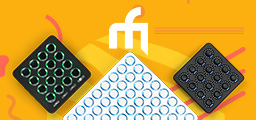Just two weeks ago we covered the latest CDJ-1000mk3 hack, turning it into a Nexus-style modern player. But what if you don’t want to rip into your old CDJs, solder in new boards, and create new casings for the displays? PiDeck, which we first covered in 2016, has a new 0.2 release coming this month that expands the functionality to CDJ timecode. This means you will be able to run almost any CDJ into a Raspberry Pi running PiDeck and control the playing audio.
PiDeck 0.2
PiDeck is based on the xwax DVS software, ported over to a format that allows users to run it directly from a microSD card on a Raspberry Pi 2 or 3. If you’re not familiar, Raspberry Pi devices are standalone, tiny project computers that are super affordable (~$35).
In the upcoming 0.2 release, the project expands on original functionality – not only can you send DVS signal from CDJs, but there’s an onscreen BPM display that chances with the pitch of the control vinyl/CD. This means you can use any functional CDJ player that can play back timecode CDs with the software – essentially, turning them into standalone players with the addition of PiDeck. That’s how they made the video above using an ancient Gemini CDJ – it’s controlling a track with a live waveform on a PiDeck, all from files on a USB stick.
The main benefit of the PiDeck approach is that there's no modification required to the CDJ; you just use a timecode CD (or timecode vinyl if you prefer). So when the CDJ finally dies, all the Raspberry Pi parts can be switched to another deck, even mid-set.
Other New Features in PiDeck 0.2: Dual Decks and Bypass?
There’s also a bypass feature that allows users with certain soundcards to entirely bypass the PiDeck software – this means if you’re playing a real record (not timecode), you can tap this button and let it play through the same audio outputs.
One other cool feature that was mentioned on YouTube – the potential to modify it to support dual deck / two channel support. Here’s the conversation in the comments:
The official 0.2 release is scheduled for sometime this month (June 2018). In prep for the release, it looks like the team has been taking the software on a bit of a tour – check it out running on this large outdoor festival sound system:






